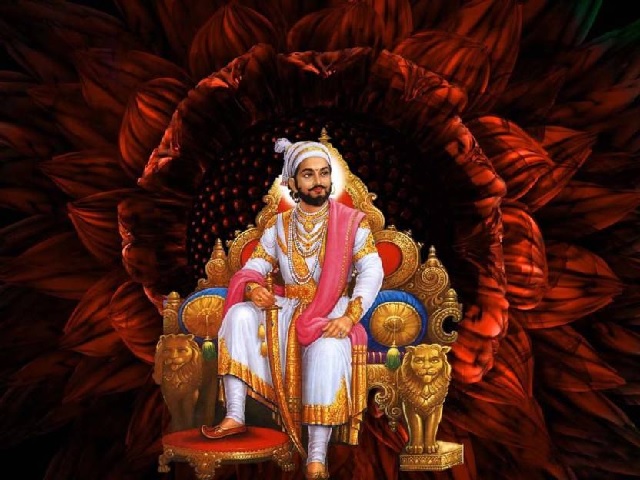Shivaji-the bravest of the Marathas, who fought the invaders of India

Chhatrapati Shivaji Maharaj had made a name for himself in Indian history for his admirable administrative skills in upholding Swarajya values and Maratha heritage. He promoted Marathi and Sanskrit as a means of communication as a political tool. He helped preserve Hindu culture in India, especially in Goa at the time of religious conversion. He forced priests to perform conversion ceremonies. Born as Shivaji Bhonsle on February 19, 1630 to Shahaji Bhonsle (father) and Jijabai (mother) at Shivneri Fort, Pune district, Maharashtra, Shivaji was deeply influenced by Hindu epics. This knowledge helped make him a fearless advocate of Hindu values. He learned the techniques of warfare, military training and the art of government from Dadaji Kondadev, who was an administrator of the jaagir.
Chhatrapati Shivaji Maharaj was a military strategist and combined many war tactics and strategies to achieve and maintain India’s autonomy. He inherited a small army of 2,000 soldiers from his father and from there he turned it into an army of 10,000 soldiers consisting of farmers, Muslims, etc. He captured the fort of Torna by introducing raid warfare techniques and using his political acumen and diplomacy at the age of 16. He was also known as the “Mountain Rat” for his knowledge of the geography of his country and he exploited it perfectly. The name “Mountain Rat” was given by King Moghul Aurangzeb who described Chhatrapati Shivaji Maharaj as a person who sowed chaos and hid in the mountains. He used guerrilla tactics such as raids, ambushes and surprise attacks against his enemies in 1645 and thus defeated 30,000 Mughal soldiers with only 2,000 army soldiers. In 1655, he captured the forts of Kondan, Jawali and Rajgarh and also awarded control of nearly 360 forts. The same guerrilla tactics were used by the Vietnamese during the Cold War.
Initiator of the Indian Navy :-In addition, he was also recognize das the father of the Indian Navy. He was the first person to notice the importance of the Indian coastline. He developed a naval force of about 500 ships between 1657and1659 to protect India against foreigners like the Portuguese, Dutch and British. This strategy was to consolidate his kingdom. To honor Chhatrapati Shivaji Maharaj, a formation of the Indian Navy was named INS Shivaji. He was crowned with the title of “Chhatrapati” in the fort of Raigarh on June 6, 1674. He was the founder of the Maratha kingdom by fighting against the Mughals and restoring Hindu pride. Chhatrapati Shivaji Maharaj was also an ardent protector of women and cows. He severely punished men who molested women. The victory of a battle never resulted in the rape of women in celebration. He insisted that women’s dignity should always be preserved and maintained. He opposed all forms of violence, harassment and dishonor against women.
In addition, renowned journalist and writer Francois Gautier established a Chhatrapati Shivaji Maharaj Museum in Pune in 2012. The aim of this museum is to show the different aspects of Indian history through several periods and to make the public aware of the rich history of India. Till today, February 19 is celebrated with great fervor in India and is declared a public holiday. The Maratha Empire in the western part of India was founded by Chhatrapati Shivaji Maharaj. He is widely regarded as one of the best fighters in history. His name forever marks the name of the great Maratha Empire.
